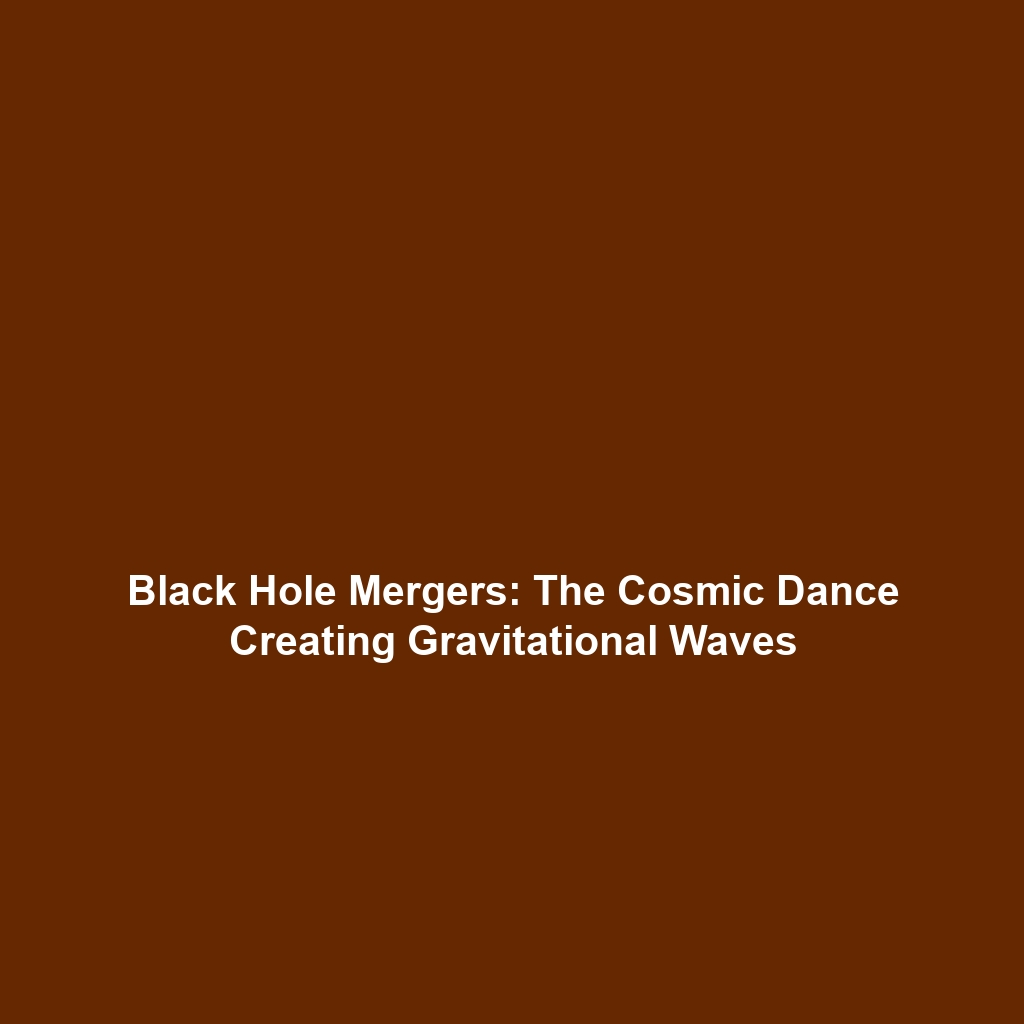Black Hole Mergers: How Black Holes Collide and Merge, Producing Gravitational Waves
Introduction
Black hole mergers represent one of the most intriguing phenomena in astrophysics, where two black holes collide and fuse together, emitting powerful gravitational waves in the process. The significance of these mergers extends beyond mere astronomical curiosity; they offer critical insights into the nature of black holes, the fabric of spacetime, and the mechanisms of cosmic evolution. Understanding how black holes merge is essential for advancing our knowledge of the universe and its fundamental principles.
Key Concepts
Understanding Black Hole Mergers
Black hole mergers occur when two black holes, typically remnants of massive stars, spiral towards each other due to the effects of gravitational radiation. As they draw closer, they lose energy and angular momentum, ultimately colliding and merging into a single, more massive black hole. This process emits gravitational waves—ripples in the fabric of spacetime that were first detected by LIGO in 2015.
Gravitational Waves
Gravitational waves are a crucial byproduct of black hole mergers. These waves travel at the speed of light and carry information about their origins, offering a unique way to observe cosmic events that are invisible to traditional telescopes. By studying these waves, scientists can gain insight into the properties of black holes, such as their masses, spins, and the dynamics involved in their mergers.
Applications and Real-World Uses
The study of black hole mergers has several key applications, particularly in the field of astrophysics. Notable uses include:
- Astronomical Observations: Understanding gravitational waves aids in the detection of other cosmic phenomena, enhancing our grasp of the universe.
- Testing General Relativity: Black hole mergers serve as a laboratory for testing Einstein’s General Theory of Relativity under extreme conditions.
- Cosmology Insights: Analyzing black hole mergers helps in understanding the formation and evolution of structure in the universe.
Current Challenges
Despite advancements in the field, several challenges persist regarding black hole mergers:
- Observational Limitations: Gravitational waves are difficult to detect, requiring highly sensitive instruments and advanced technology.
- Theoretical Models: Developing accurate models to predict the merger dynamics poses challenges due to the complexity of physics involved.
- Data Interpretation: Analyzing the data from gravitational wave detections requires significant expertise and is often time-consuming.
Future Research and Innovations
Ongoing research in black hole mergers promises to unveil more about our universe. Upcoming innovations include:
- Advanced Detection Technologies: Innovations aimed at enhancing the sensitivity and range of gravitational wave detectors.
- Multi-Messenger Astronomy: Combining gravitational wave data with electromagnetic observations to gain a holistic understanding of cosmic events.
- Numerical Simulations: Improved simulations to better predict the behavior of black holes during and after mergers.
Conclusion
In summary, black hole mergers play a pivotal role in the study of astrophysics, shedding light on the nature of black holes and the fundamental workings of our universe. The production of gravitational waves during these events has revolutionized our understanding of cosmic phenomena. As research continues and technologies evolve, the insights garnered from these mergers will deepen our comprehension of black holes and the rich tapestry of the cosmos. For further exploration, consider reading more about gravitational waves and their implications in modern astrophysics.

